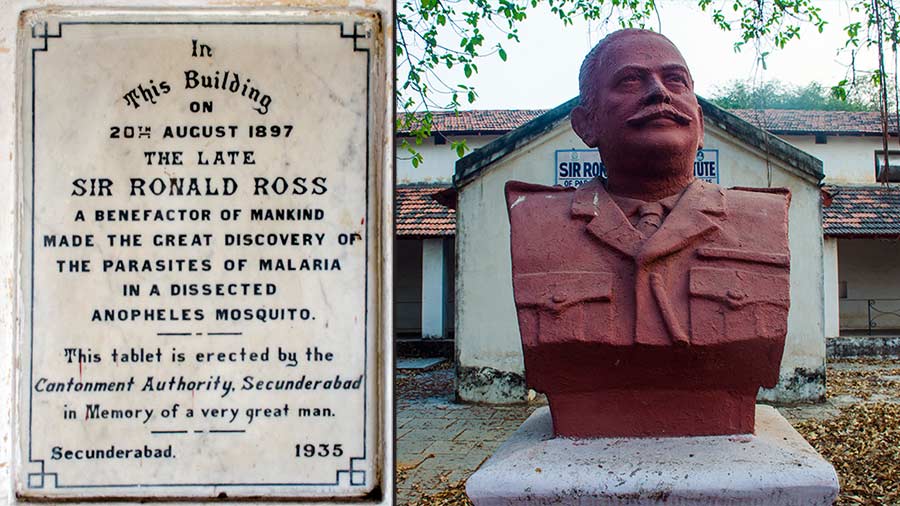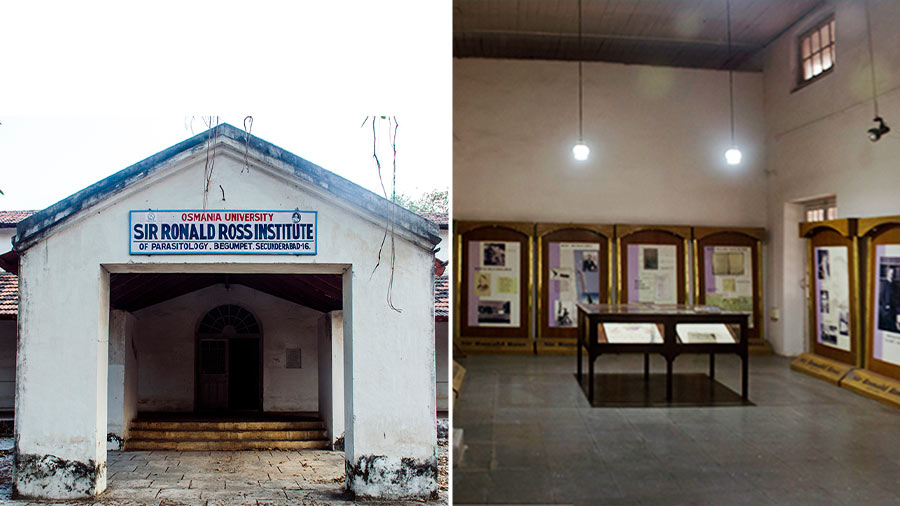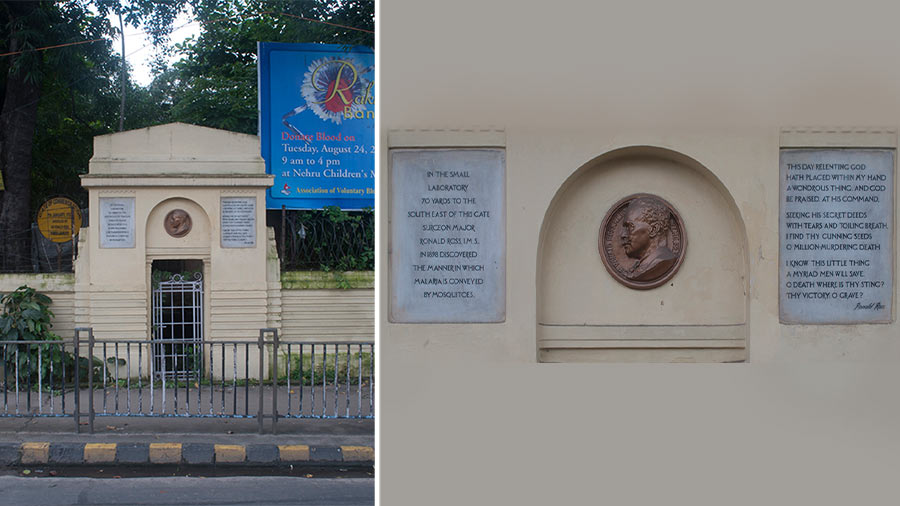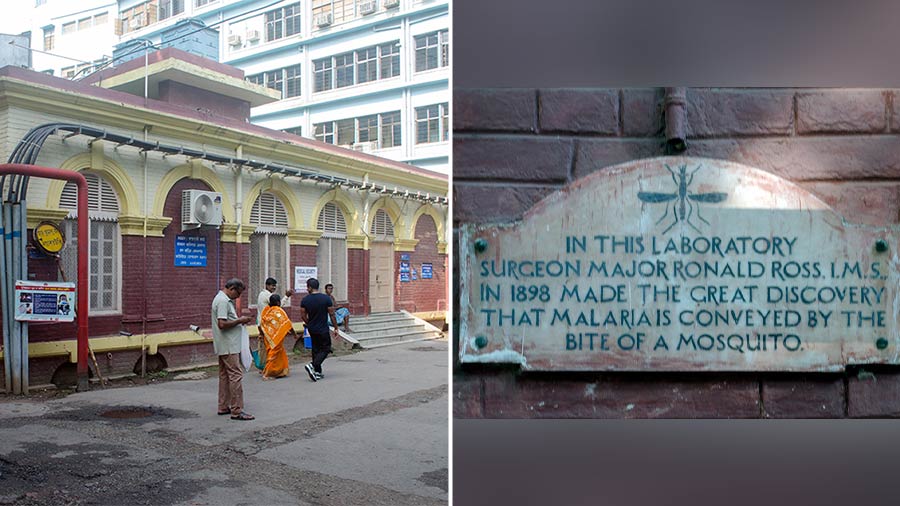Discovery of transmission of malaria
August 20 is World Mosquito Day. On this day, 126 years ago, Ronald Ross, a British physician working in a small laboratory in Secunderabad, Hyderabad, discovered the presence of malarial parasites in a dissected female Anopheles mosquito and concluded that the deadly disease was transmitted by the female Anopheles mosquito.
Ross continued with his research and a year later in 1898, working in a small laboratory in Presidency General (PG) Hospital, he discovered the entire life cycle of the malarial parasite.

A plaque and (right) a bust at the Sir Ronald Ross Institute of Parasitology, Begumpet, Secunderbad, Hyderabad
Ronald Ross (1857–1932)
Ronald Ross was born in Almora. At the age of eight, he was sent to England for studies. From an early childhood, Ross had an interest in a wide variety of subjects, which included mathematics, literature, music and poetry. He completed his medical degree in 1879 and two years later he qualified for the Indian Medical Service (IMS).
He returned back to his country of his birth. He flourished as a medical practitioner and kept his boyhood passion for poetry alive by regularly penning down verses. In 1902, he was awarded the Nobel Prize in medicine, thus becoming the first British to win the prestigious prize. He also has the distinction of being the first non-European born Nobel laureate.

Sir Ronald Ross Institute of Parasitology, Begumpet, Secunderbad, Hyderabad and (right) inside the museum
Sir Ronald Ross Institute of Parasitology (Hyderabad)
The building where Ross made the path-breaking discovery in Hyderabad still stands and is known as the Sir Ronald Ross Institute of Parasitology. It functions under the Osmania University. The building located in Begumpet region of Secunderabad has a chequered history. After Ross left, it changed hands several times and even functioned as a pilot training centre under the Airports Authority of India.
Former Indian Prime Minister Rajiv Gandhi did his pilot training from this building in 1979. Today, it serves as a small museum dedicated to Ross and his research on malaria. The museum, spread across a large hall, contains various old photos of Ross and his family and also includes a bust of Ross. It also houses charts and diagrams explain the life cycle of the parasite and various other aspect of malaria. The compound adjoining the lab has another bust of Ronald Ross and next to the entrance is a plaque. Put up in 1935 it mentions about Ross’ legendary discovery.
Access: The complex is usually kept under lock and key. Do knock on the gate and the lone caretaker will open it. If he doesn’t open, look out for the mobile number written next to the gate. It belongs to the caretaker, call him up and fix an appointment.

The ceremonial arch dedicated to Ronald Ross at PG Hospital and (right) close-up of the medallion of Ronald Ross and the two plaques
Presidency General Hospital (Calcutta)
The northern wall of PG Hospital contains an arch dedicated to Ross. It was inaugurated in 1927 by Lord Lytton in the presence of Ross. In the centre and just above the arch is a medallion of Ross, which is flanked by two marble plaques. The left one mentions about the discovery while the one on right is a poem penned down by Ross to celebrate his landmark discovery.
The laboratory where Ross discovered the lifecycle of the deadly parasite still stands and is known as Sir Ronald Ross Laboratory. It presently functions as a malaria testing centre. Next to the entry gate is a small plaque with an image of a mosquito mentioning about the great discovery.
Access: Memorial and the outside of the lab are within public access

Sir Ronald Ross Laboratory, PG Hospital (now SSKM Hospital) and (right) the plaque at its entrance
'The Calcutta Chromosome'
“It’s strange,” she said. “I’ve changed buses here hundreds of times. I can’t even begin to count how often I’ve walked past this wall. But I’ve never noticed that inscription up there.” These are the words of Urmila, one of the main characters of Amitav Ghosh’s novel The Calcutta Chromosome. Ghosh’s medical thriller published in 1995 is loosely based on Ross’ malarial research. The labs of Begumpet and PG Hospital, along with the ceremonial arch, find frequent mention in Ghosh’s bestselling novel.
